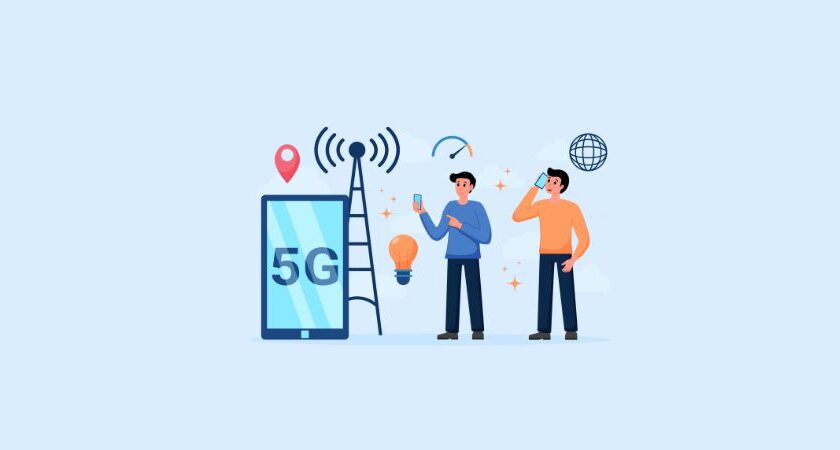The world of healthcare is on the cusp of a technological revolution with the implementation of 5G technology. As the fifth generation of wireless communication, 5G promises to offer faster, more reliable, and lower latency connectivity compared to its predecessors.
While the buzz around 5G has mainly centered on its impact on communication, entertainment, and smart cities, its potential in revolutionizing healthcare services is equally significant. In this blog, we explore the transformative role of 5G in healthcare, highlighting its ability to enable faster and more connected medical services.
Accelerated Data Transfer for Remote Diagnostics
One of the most significant advantages of 5G in healthcare is its capability to transfer large amounts of data at unprecedented speeds. For remote diagnostics, this means medical professionals can access patient records, diagnostic images, and test results in real-time, regardless of their location.
With faster data transfer rates, physicians can make accurate and timely decisions, leading to improved patient outcomes. Moreover, 5G enables the use of advanced telemedicine applications, where patients can engage in virtual consultations with doctors from the comfort of their homes.
Enhanced Mobile Health Applications
Mobile health applications (mHealth) have already made a remarkable impact on healthcare by empowering individuals to take charge of their well-being. However, their full potential has been somewhat limited by the constraints of previous wireless technologies.
With 5G, mHealth applications can now seamlessly transmit vast amounts of health data, such as heart rate, blood glucose levels, and activity tracking, to healthcare providers. This continuous flow of data enables physicians to monitor patients more effectively and personalize treatment plans based on real-time insights.
IoT and Wearables for Remote Patient Monitoring
The Internet of Things (IoT) has become increasingly prevalent in healthcare, especially with the advent of wearable devices. These wearables, such as smartwatches and fitness trackers, gather valuable health data from users. 5G connectivity provides the bandwidth and low latency required to ensure these devices can transmit information in real-time, fostering remote patient monitoring.
Physicians can remotely monitor patients’ vital signs, adherence to medication, and overall health trends. Early detection of health issues can prevent hospital readmissions and improve overall healthcare efficiency.
Precision Medicine and Big Data Analysis
Precision medicine, which tailors medical treatments to an individual’s genetic makeup, is at the forefront of cutting-edge healthcare. Implementing precision medicine requires the analysis of vast amounts of genomic data, which is resource-intensive and time-consuming.
With 5G’s high-speed data transfer and low latency, medical researchers can analyze and share massive genomic datasets much faster. This will significantly speed up the discovery of targeted therapies and treatment options for various diseases.
Augmented Reality (AR) and Virtual Reality (VR) in Medical Education and Training
5G’s low latency and high bandwidth capabilities open up new possibilities in medical education and training through augmented reality (AR) and virtual reality (VR). Medical students can participate in immersive training experiences, allowing them to practice surgical procedures and simulations in a safe, controlled environment.
This technology can significantly improve the proficiency and confidence of medical professionals, leading to better patient care.
Connected Healthcare Facilities
5G’s network slicing feature allows healthcare facilities to create dedicated and isolated networks, ensuring seamless and secure connectivity for medical devices and applications. This means that critical medical equipment, such as ventilators and life support systems, can operate on a separate network from non-critical devices, reducing the risk of interference and ensuring continuous operations during emergencies.
Remote Surgery and Robotic Assistance
The low latency and high bandwidth of 5G are essential for enabling remote surgeries and robotic-assisted procedures. Surgeons can operate on patients from remote locations, supported by robotic systems that provide precise movements and haptic feedback.
This capability can be a game-changer, especially for patients in remote areas or those in critical conditions where access to specialized medical expertise is limited.
Conclusion
The integration of 5G technology into the healthcare sector has the potential to revolutionize medical services, enabling faster and more connected care. From accelerated data transfer for remote diagnostics to enhanced mobile health applications, 5G is set to reshape the landscape of healthcare delivery.
With its ability to support IoT, wearable devices, precision medicine, AR, and VR applications, the possibilities for improving patient outcomes and overall healthcare efficiency are boundless. However, as with any transformative technology, the successful adoption of 5G in healthcare will require collaboration among stakeholders, addressing security and privacy concerns, and ensuring equitable access for all patients.
As the world embraces the era of 5G in healthcare, we can expect a brighter and healthier future for all.
